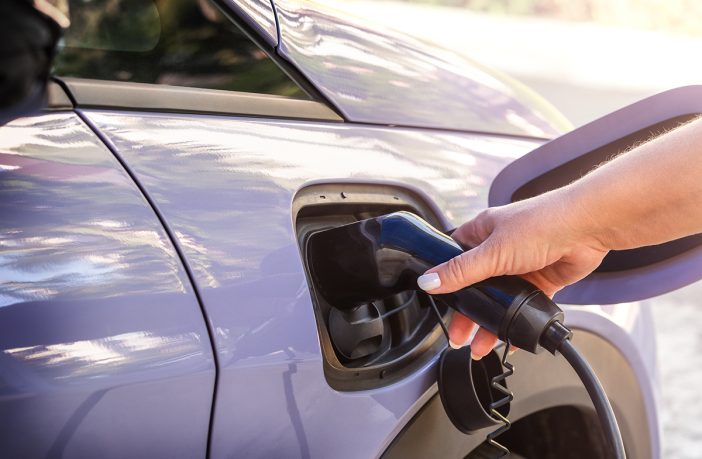Governor Kathy Hochul today announced $3 million has been awarded to three projects to advance technologies that can help integrate electric vehicles efficiently into the electric grid. The Governor has also made available $4 million to advance technologies that overcome data collection, transmission and operational challenges faced by utilities to manage electric vehicle (EV) charging. Together, these solutions will help to enhance grid flexibility, shift charging to accommodate energy demand, and lower charging costs for consumers.
“New York is leading the way in building a smarter, more sustainable energy future,” Governor Hochul said. “By investing in innovative technologies that support EV charging and integration with the grid, we are strengthening our clean energy infrastructure to meet the demands of tomorrow. We are also improving grid resiliency while making it easier and more affordable for New Yorkers to drive electric.”
The $3 million has been awarded to three projects through the Vehicle Grid Integration Program, administered by the New York State Energy Research and Development Authority (NYSERDA), which provides funding for projects that are scalable and advance electric vehicle charging infrastructure through product development, technology demonstrations, or new business models. Technologies include bi-directional charging, energy storage, on-site energy generation, and EV managed charging.
New York State Energy Research and Development Authority President and CEO Doreen M. Harris said, “Investing in vehicle to grid integration is a game changer for utilities and consumers when it comes to balancing demand on the electric grid and these awarded companies have put forward innovative solutions to improve the way we achieve that balance. Advancing technologies that can shift when electric vehicle charging happens will open the door for future cost reductions, more renewable energy resources like wind and solar, increased grid flexibility and fewer infrastructure upgrades.”
The awarded projects include:
- Charging Platform Lamppost Conduit Interconnection: Voltpost was awarded $775,000 to develop lamppost EV charging in the New York City area, Capital Region, and Hudson Valley focusing on UL certification, retrofits, and plans to deploy at least ten additional Level 2 charging stations in New York State.
- Demonstrating Statewide Implementations of Flexible Interconnections for Fleets: The Mobility House was awarded $867,000 to show how utility distribution capacity can be maximized with flexible interconnections to support electric school bus charging at a depot in Staten Island and a second location yet to be determined in New York State to pilot a method for fast charger deployment that decouples charger construction from electric grid development timelines.
- Distribution-Optimized EV Managed Charging to Enhance Grid Flexibility: Weave Grid, Inc. was awarded nearly $1 million to control when EV managed charging will occur in the Orange and Rockland Utilities service area by using software and topology data to coordinate schedules and balance the energy load.
Managed EV Funding
Also announced today is $4 million in new funding for a competitive solicitation offered through NYSERDA’s Electric Vehicle Managed Charging program. Proposals are sought from researchers, developers and consultants, who individually or as a team, will develop or demonstrate technologies that can solve the data collection, data transmission and operational challenges faced by utilities when integrating electric vehicles, regardless of supplier, with the electric grid. Proposals must include behind-the-meter EV integrated solutions including the transfer of bi-directional data and utility control over charging, or both to study how these solutions can alleviate demand on the electric grid.
The focus of this solicitation was identified by NYSERDA working with Avangrid, parent company of Rochester Gas & Electric (RG&E) and New York State Electric & Gas (NYSEG), to provide data that will help inform future utility rate and program planning for EV managed charging.
Proposals are due on September 16, 2025, by 3:00 p.m. ET. For more information on this funding opportunity please visit NYSERDA’s website.
For more than fifty years, NYSERDA has been a trusted and objective resource for New Yorkers, taking on the critical role of energy planning and policy analysis, along with making investments that drive New York toward a more sustainable future. Today’s announcement builds on the success of NYSERDA’s Grid Modernization program, which since 2016 has awarded approximately $65 million to over 110 grid technology companies and research organizations for projects that improve low-cost high-accuracy grid sensors, modeling and simulation tools, and advanced engineering solutions. New York State’s investments in research, development, and commercialization support innovators accelerating the clean energy transition. NYSERDA’s Innovation and Research program is deploying approximately $1.2 billion over 15 years as direct research investments and commercialization support. To date, more than $800 million in investments have supported more than 700 companies and made nearly 300 products commercially available to individuals, businesses, and utilities.
In addition, New York State is investing nearly $3 billion in electrifying its transportation sector and rapidly advancing measures that all new passenger cars and trucks sold, are zero emissions, along with all school buses being zero emissions the same year. There are a range of initiatives to grow access to EVs and improve clean transit for all New Yorkers including the Drive Clean Rebate, EV Make Ready, EVolve NY, the New York Truck Voucher Incentive Program (NYTVIP), the New York School Bus Incentive Program, and the Direct Current Fast Charger Program.
Funding for this initiative is through the Clean Energy Fund (CEF).
New York State’s Climate Agenda
New York State’s climate agenda calls for an affordable and just transition to a clean energy economy that creates family-sustaining jobs, promotes economic growth through green investments, and directs a minimum of 35 percent of the benefits to disadvantaged communities. New York is advancing a suite of efforts to achieve an emissions-free economy by 2050, including in the energy, buildings, transportation, and waste sectors.











